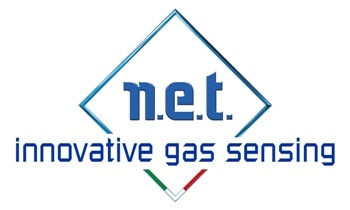It is easy to underestimate gas hazards associated with drinking water facilities and waste water plants. However, different flammable and toxic gases must be produced and employed to convert waste water into a suitable state for discharge, as well as for transforming extracted supplies into clean water for civil use.
.jpg)
Significance of Gas Detection
To protect the environment, facilities, and personnel in these circumstances, reliable gas detection is necessary.
Even though the risk of gas varies with different applications, locations, and treatment processes, some of these are shared by the majority of plants.
The most common hazards in wastewater facilities involve hydrogen sulfide, methane, carbon dioxide, chlorine, and oxygen depletion. Such sources as aeration tanks, sewers, deodorizing plants, and sludge digester tanks are the causes of these hazards.
Generally, the most crucial processes are the sludge digestion and aerating processes, as biogases are produced from sludge, including hydrogen sulfide, carbon dioxide, and methane.
Biogas is currently collected and treated for energy production as it is particularly flammable. However, even minor leaks from a digester may cause an explosion. Aerating methods are also utilized in order to remove Ammonia. Wastewater is then generally treated using chlorine prior to the plant being left to be discharged.
Different Types of Gas Hazards
Gas hazards in drinking water facilities include chlorine dioxide, chlorine, ammonia, sulfur dioxide, and ozone. Most of the time, extracted supplies arrive risk-free and chemicals are only used at the treatment or disinfection stages, with concomitant dangers. The disinfectant which is used most frequently is chlorine, which is also a legal requirement in numerous countries. However, there is increasing interest in cutting-edge technologies involving ozone or chlorine dioxide.
The primary gas hazards associated with water treatment and the areas of plants in which these may occur are listed below.
- Hydrogen sulfide (H2S) is incredibly toxic. At low concentrations (such as 0.0047 ppm), it is renowned for its characteristic odor. However, human olfactory nerves become damaged at levels above 150 ppm, which makes smelling the gas impossible, even if it is at the lethal concentration of 800 ppm. H2S both occurs naturally and can also be produced during wastewater treatment. Monitoring the presence of H2S is vital in sewers, anaerobic digesters, wet/dry wells, and sludge de-watering systems.
- Methane (CH4) is an extremely flammable gas. It is mainly produced in sludge decomposition during wastewater treatment. It is essential that CH4 is monitored in sludge and raw sewage which enters de-watering systems, in anaerobic digesters, wet/dry wells, and cogeneration facilities (where it is used in order to power the treatment facility).
- Ozone (O3), Chlorine (Cl2), and Ammonia (NH3) are all toxic gases which are utilized during the decontamination stage in water purification plants and wastewater treatment. Gas detectors must be situated close to storage tanks and in process areas in which they are used.
- Carbon dioxide (CO2) negatively affects respiratory capacity and causes asphyxiation by displacing oxygen. It is largely produced during wastewater treatment in sludge decomposition and during the production of Biogas. CO2 must be monitored in sludge and raw sewage which enters de-watering systems, in wet/dry wells, cogeneration facilities, and anaerobic digesters.

This information has been sourced, reviewed and adapted from materials provided by Nano Environment Technology (N.E.T).
For more information on this source, please visit Nano Environment Technology (N.E.T).